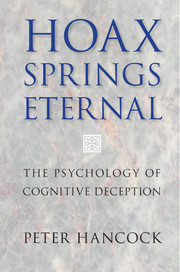Case 4 - The Vinland Map
The Visual Evidence for the Norse Claim of the Discovery of America
Published online by Cambridge University Press: 05 January 2015
Summary
The Map and Its Intrinsic Claim
Ensconced deep in the Beinecke Rare Book and Manuscript Library of Yale University in New Haven, Connecticut, resides a small parchment map upon which faint ink lines delineate an early representation of the world. In the top left-hand corner of this map is an irregularly shaped island that is referred to in the associated text as “Vinlanda Insula” [1]. It is this notation that has provided its popular name: “The Vinland Map.” A representation of this map is shown in Figure 4.1. Even a cursory glance at this illustration immediately communicates the fact that, to the left of the centerfold, the map shows Western Europe, Iceland, Greenland, and then further west what appears to be an island beyond Greenland. This is often what is purported to be the coast of North America. We can add to this spatial representation a claimed date of creation of the map around 1440 AD [2], and when we put these two facts together, it becomes clear that what the map appears to represent is the discovery of America by someone presumably from Europe prior to Christopher Columbus. As with almost all of the other examples in this text, the first and most prominent question that is always raised is whether this is an authentic artifact or whether it is a much later creation and thus a hoax. If it is a hoax, was it an intentional one? Or could it possibly have been a personal and private creation in the form of an exercise that, through a sequence of unforeseen circumstances, resulted in an unintentional hoax? If it is an authentic artifact, what are the ramifications for history and especially the respective claims of primacy in respect to European expansion into the New World? As with each of the accounts presented here, as Damon Runyon would say, “a story goes with it.”
- Type
- Chapter
- Information
- Hoax Springs EternalThe Psychology of Cognitive Deception, pp. 96 - 120Publisher: Cambridge University PressPrint publication year: 2015

